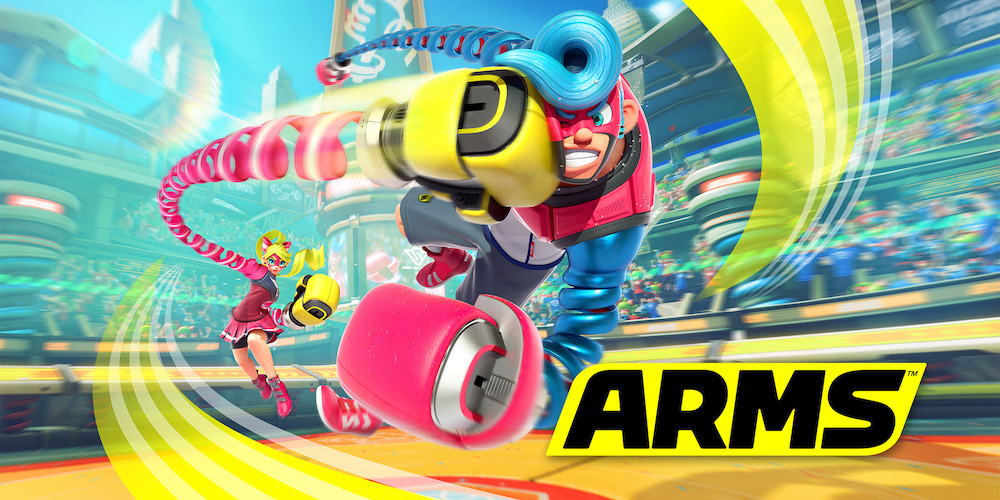
The Nintendo Switch has been incredibly successful so far both financially and as a console in general, but its biggest flaw at launch was its limited library of games. That problem is slowly but surely being fixed, thanks to an array of indie games being released on the eShop and Nintendo doubling-down with AAA first-party games that are being trickled out every other month. ARMS is the next big game for the console, which is a unique and original take on boxing where every fighter has arms that can stretch across the ring. When it was initially unveiled, it seemed like a very odd concept, similar to that of the Boxing game found in Wii Sports. After participating in the Global Testpunch, however, I was sold on the game and have been incredibly excited ever since. Developed by Nintendo EPD, ARMS is not only a great addition to the system’s library but a surprisingly deep and mechanical fighting game that anyone can enjoy.
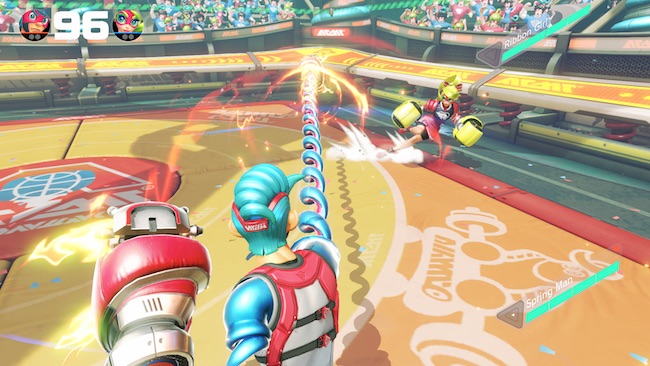
ARMS doesn’t feature an original story or campaign mode but there is something similar in the form of a Grand Prix mode. You pick your character and fight ten different matches of varying game modes against AI. Each fighter has their own backstory, motives, and characterizations, making them all feel unique and full of life. The presenter of the fights, Biff, actively commentates in-between matches, and while he doesn’t add much to the experience overall, he does provide some background for each of the characters and the occasional comic relief from time to time.
It’s an interesting mode, and your first foray into it will probably take you at least half an hour to complete with subsequent completions using different fighters being encouraged and rewarded. The biggest problem with Grand Prix mode, however, is the difficulty curve. When I jumped into ARMS, I picked difficulty four out of seven and got absolutely hammered. There’s a steep learning curve to get around for first-time players, and it can be quite discouraging at first. There’s a lot to learn and get used to here, and finding your preferred control method and learning how to play different characters will take some time, though it’s worth it.
If you’ve seen or heard of ARMS, you’re probably aware that its primary control method is through motion controls with both Joy-Cons in either hand. While it’s fun at first, I found I was never as accurate as I wanted to be with my punches, and it felt like throwing and curving strikes were never as responsive or as satisfying as it was on a traditional controller. It’s not that the motion controls are bad, they just aren’t for me, and everyone is going to have different control preferences when it comes to playing the game.
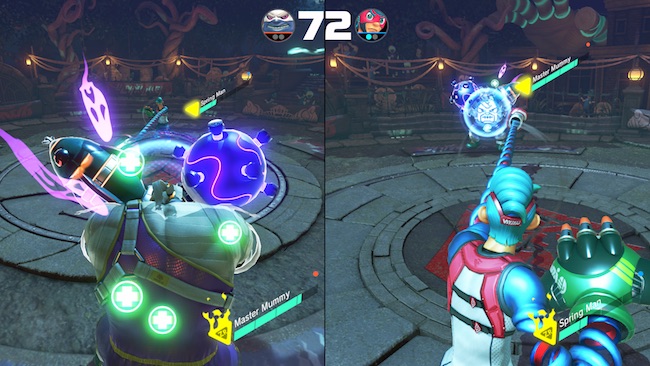
ARMS does not function like your usual 3D fighting game. It’s got Nintendo written all over it in every aspect, and while it seems strange at first, it develops into a deep and mechanical fighting game once you get a grasp on how it works. You punch by thrusting the left and right Joy-Cons forward and curve your punches by inputting movements while they’re travelling. Different types of Arms can be unlocked for certain characters and they can be mixed to complement each other. Each one has an element and a weight class, all of which have their own properties and charge punches. Charge punches add additional bonuses to your arms, such as knockdowns, stuns, damage over time and more.
All of these features, alongside the ability to throw, block, dash, jump, and use rush attacks, amount to a fighting game where every decision you make is pivotal in winning or losing a match. It becomes a mind game of throwing punches at your opponent, while still managing to defend at the same time. It’s fast-paced, satisfying, exciting, and never fails to keep you hooked.
As if that wasn’t enough already, the ten different fighters bring a lot to the table as well. Aside from them being unique regarding character and personality, each one has their own abilities that help them in matches. These skills range from Ninjara’s teleportation block to Ribbon Girl’s additional mid-air jumps and fast-fall. Each one has their own strengths and weaknesses, and after trying all of them, you’ll find two or three characters that fit your playstyle. Each fighter has an arena themed after them, each with their own little gimmicks and quirks that can give you an advantage if you know how to properly make use of them.
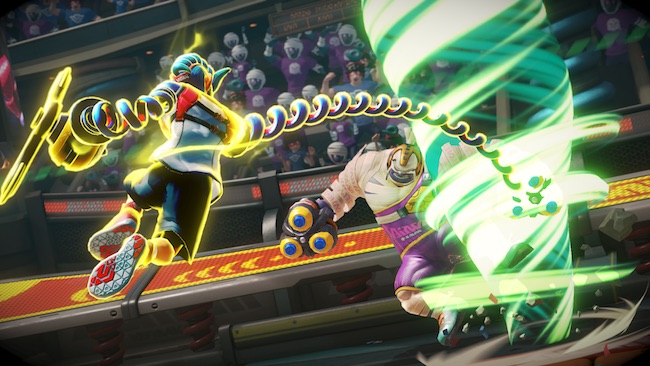
The plethora of game modes that you have access to on launch is nothing short of fantastic. Some are definitely better than others, but they’re all good in their own right, and there’s a bit of something for everyone. You have your standard one versus one and two versus two game modes, and then you have the wacky stuff akin to mini-games that work surprisingly well within ARMS’ gameplay loop. There’s a lot of fun to be had with game modes such as Skillshot, V-Ball, Hoops, and 1-on-100, but you’ll inevitably develop two or three favourites outside of the original versus modes. I personally found Hoops and V-Ball to be very enjoyable; Hoops being inspired by basketball and V-Ball being volleyball with stretchy arms – it’s as fun as it sounds.
ARMS arguably has the best online system to be found in any Nintendo game, whether you’re playing ranked or normal modes. Online is accessible from the get-go, and ranked play is available once you complete a difficulty 4 or higher Grand Prix. When you hop into regular multiplayer, you’re put into a lobby where you’re randomly matched with other players and a random game mode. In ranked mode, however, you are paired directly with players of a similar skill level. It’s both seamless and incredibly simple. A second player can also join you to participate in game modes such as V-Ball and two versus two matches. While I was testing, the connections were always stable, which made for a thoroughly enjoyable online experience, regardless of whether it was competitive or just for fun.
Whether you play ARMS in handheld mode or on a TV, it always looks very sharp and runs consistently well. In console mode, the game runs at 1080p and 60FPS, with a drop to 900p when two or more players are on the same console. In handheld mode, the game runs at 720p and 60FPS. The action is always smooth no matter what, though, and the game always looks gorgeous. The art style fits the whole concept of the world, and it’s filled with bright, vibrant colours all the time.
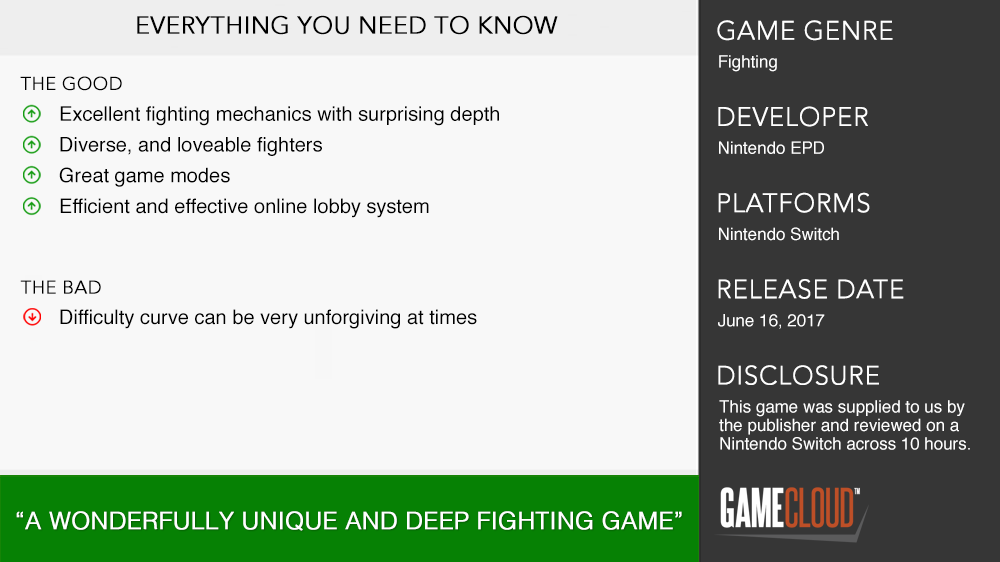
As a first real foray into mechanically deep fighting games for Nintendo, ARMS is a wonderfully unique and enjoyable fighting game. It might be hard to grasp the controls and mechanics at first, but once you come around to them, the game has a lot to offer. It’s deceptively deep, full of character, and has some great game modes that are complimented by an efficient online lobby system. ARMS is one of the many embodiments of Nintendo’s design philosophy; it’s innovative, complex, and gratifying, even if there is a steep difficulty curve against AI opponents. It’s another fantastic addition to the Switch’s library and one that you should definitely get your hands (or arms) on.











